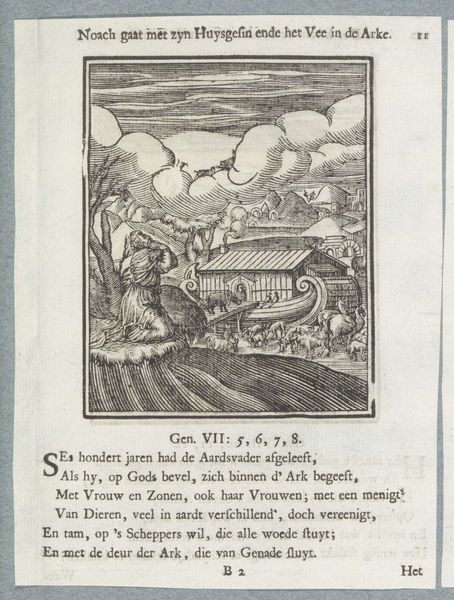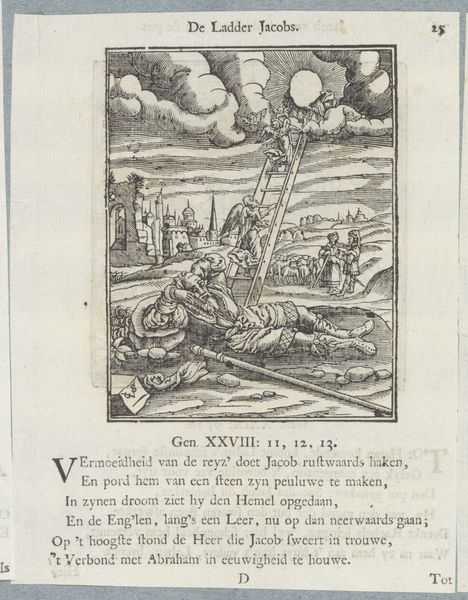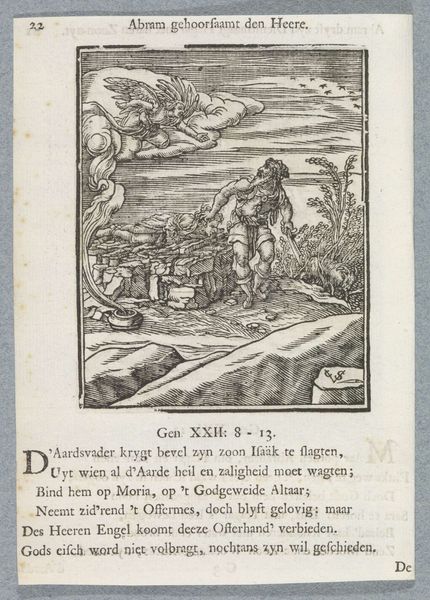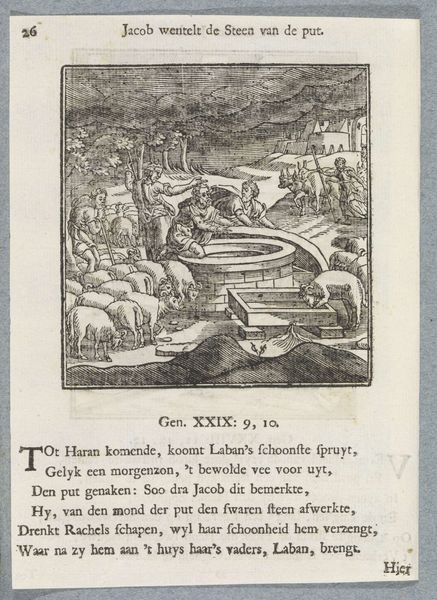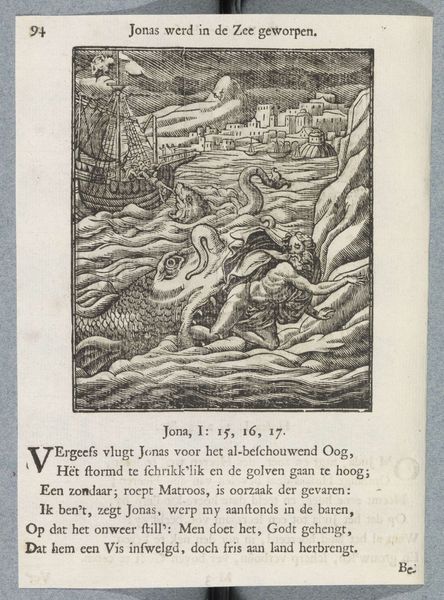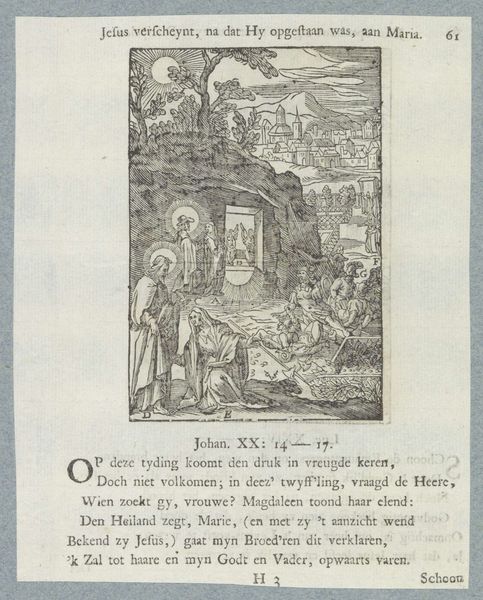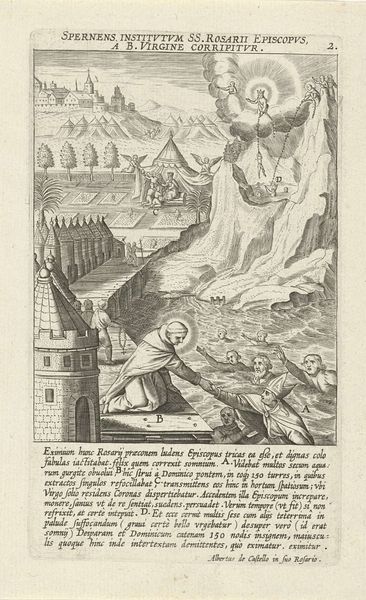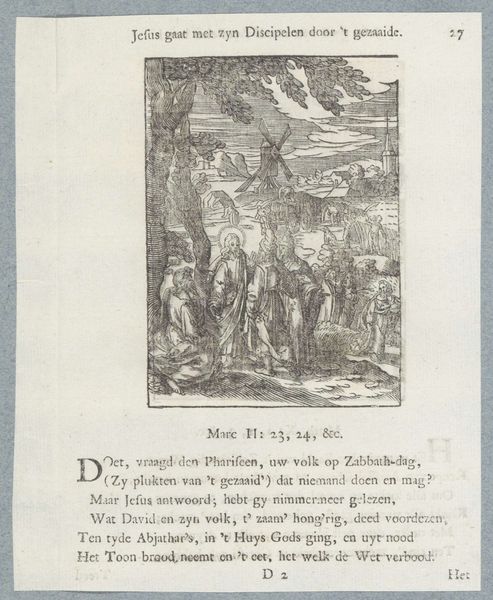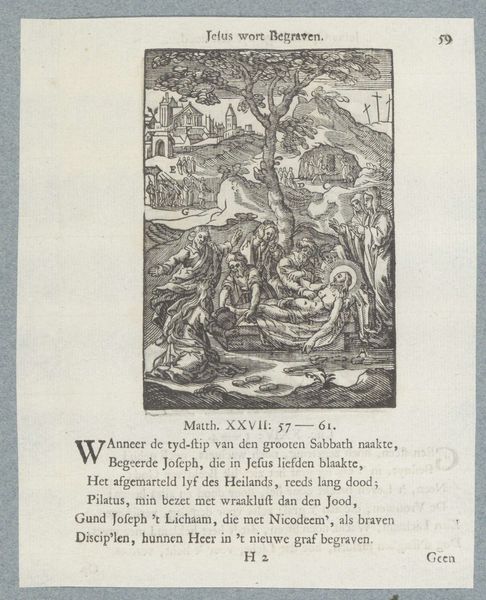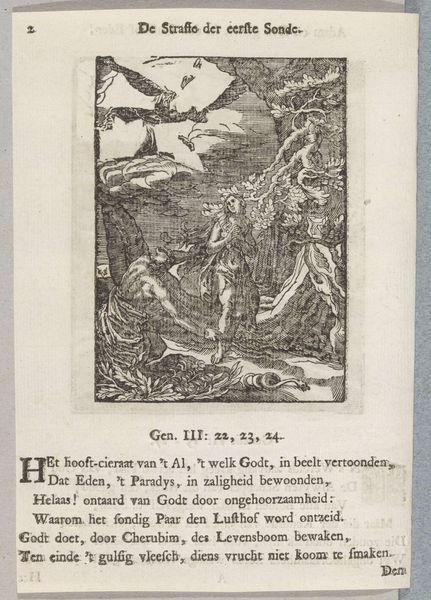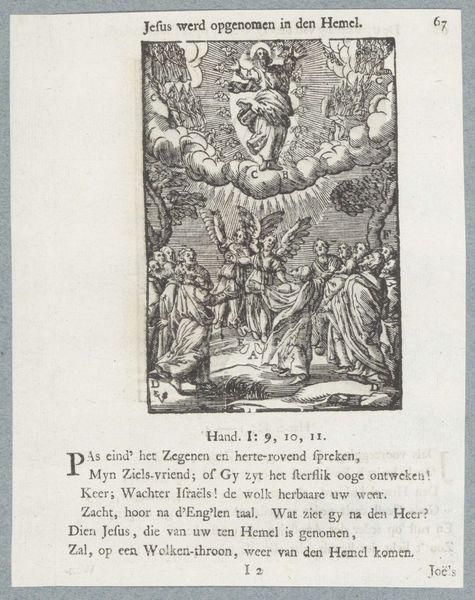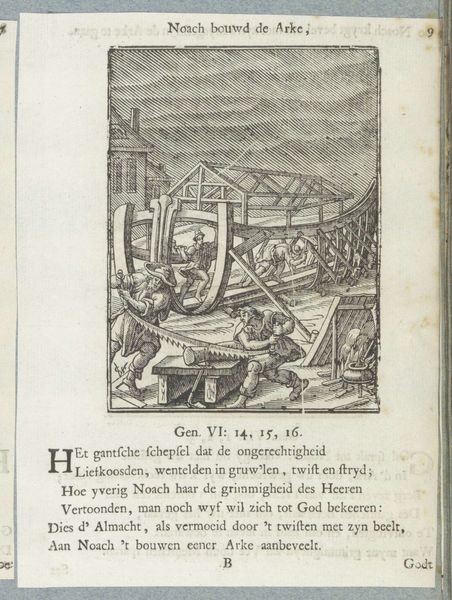
print, engraving
#
narrative-art
#
baroque
# print
#
old engraving style
#
landscape
#
history-painting
#
engraving
Dimensions: height 104 mm, width 74 mm, height 171 mm, width 125 mm
Copyright: Rijks Museum: Open Domain
Editor: This is "Gods verbond met Noach," or "God's Covenant with Noah," a print by Christoffel van Sichem II, dating from around 1645 to 1740. It's currently held at the Rijksmuseum. I'm struck by the detail achieved in the engraving, especially considering its relatively small scale. How should we interpret it? Curator: Consider the process. The labor intensive engraving process would have made the reproduction of these images easier, faster, cheaper. But that comes at the cost of losing resolution, and we may interpret this in several ways: It would permit wider distribution to homes outside the patronage system and beyond the wealthier elites, of this Biblical story during a time of significant religious and political upheaval, particularly following the Eighty Years’ War. How does the change of scale and ownership affect its perceived artistic value? Is that diminishment justifiable or, might there even be an elevation through proliferation? Editor: That's fascinating! So, it's not just about the artistry itself, but the democratizing effect of printmaking and its role in disseminating cultural and religious ideas. How did the materials and making process themselves impact its message? Curator: Think about the socio-economic context. Copperplate engraving requires specific skills and access to materials – metal, tools, inks, paper. The print trade was tightly controlled. What impact do you think these specific trades may have had on contemporary cultural beliefs, especially during periods of scarcity? Also, considering that it is printed, would this also change the art market itself? Would this impact the development of similar trades, given it provides both new artistic freedoms, while altering perceptions of value, as mentioned before? Editor: That really reframes how I see it. It’s not just a biblical scene; it's a commodity shaped by the economics of its time and accessible to the popular marketplace! It certainly changes its social and financial landscape. Curator: Exactly. Looking at art through a materialist lens allows us to see how production, distribution, and consumption intertwine with the image itself. We get to ask important questions on where labour can take us! Editor: I never thought about the economic side of printmaking, really interesting. I'll definitely be approaching artworks differently now, keeping the means of production in mind.
Comments
No comments
Be the first to comment and join the conversation on the ultimate creative platform.
